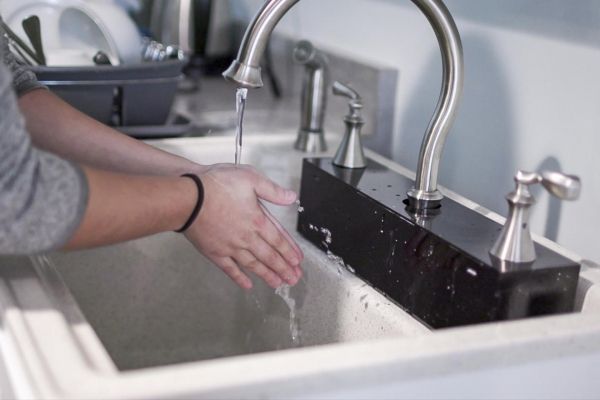Barely hidden from his study participants, William Jou, a former graduate student in mechanical engineering at Stanford University, pulled off a ruse straight out of The Wizard of Oz. Except, instead of impersonating a great and powerful wizard, Jou pretended to be an autonomous sink. He did this to test whether a sink that adapts to personal washing styles could reduce water use.
A faucet with anything close to the brains of a mechanical engineering student doesn’t yet exist. So, Jou and his colleagues in the lab of Erin MacDonald, assistant professor of mechanical engineering, made the next best thing: a faucet that seemed to automatically adjust to a user’s preferences, but was actually controlled by Jou.
The results of their sly experiment, detailed in a paper presented Aug. 20 at the ASME 2019 International Design Engineering Technical Conferences & Computers and Information in Engineering Conference (IDETC/CIE), support the idea that thoughtfully designed smart sinks could help conserve water by regulating water use and nudging users to develop more water-conscious habits.
“We looked at the faucet because that’s where a lot of water usage in the home occurs, but when you compare your sink to other products in the house – a thermostat or refrigerator – you see that there haven’t been updates to how the sink works in a very long time,” said MacDonald, who is senior author of the paper. “There have been small updates but nothing that really harnesses the power of technology.”
Read more at Stanford University
Image: A Stanford experiment with a fake autonomous sink showed that a real smart sink could help conserve water. (Credit: Kurt Hickman/Stanford News Service)


